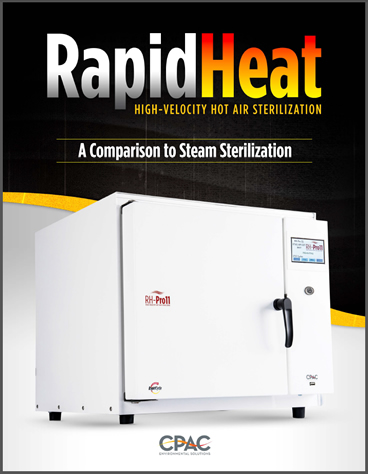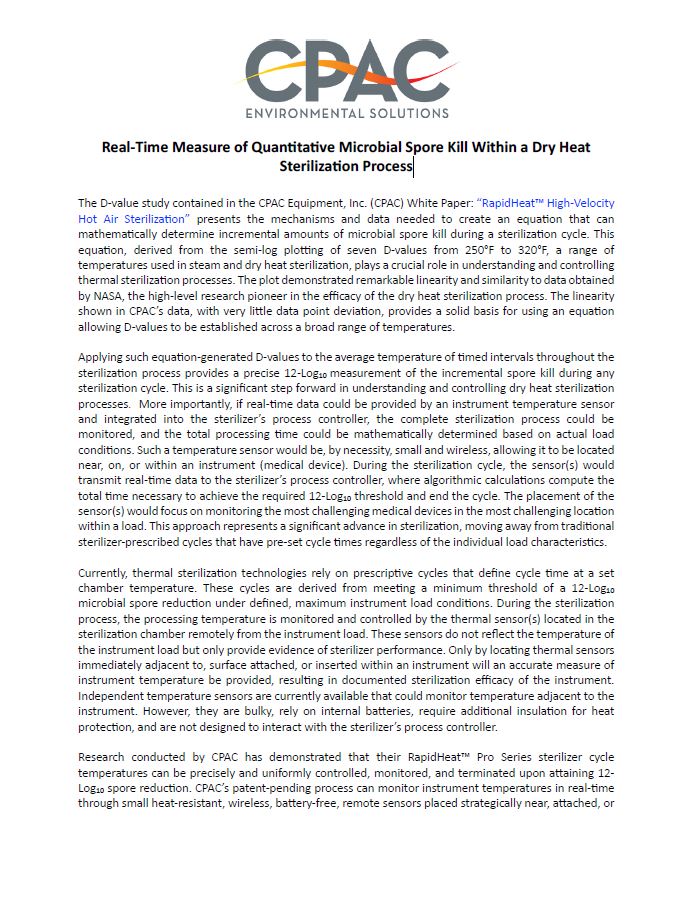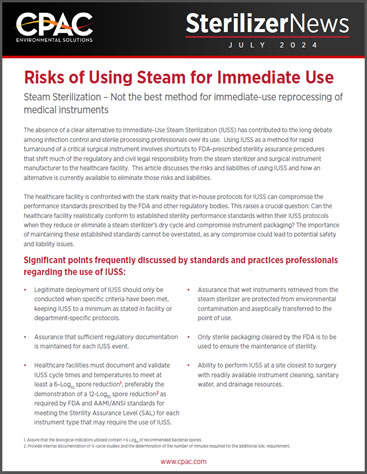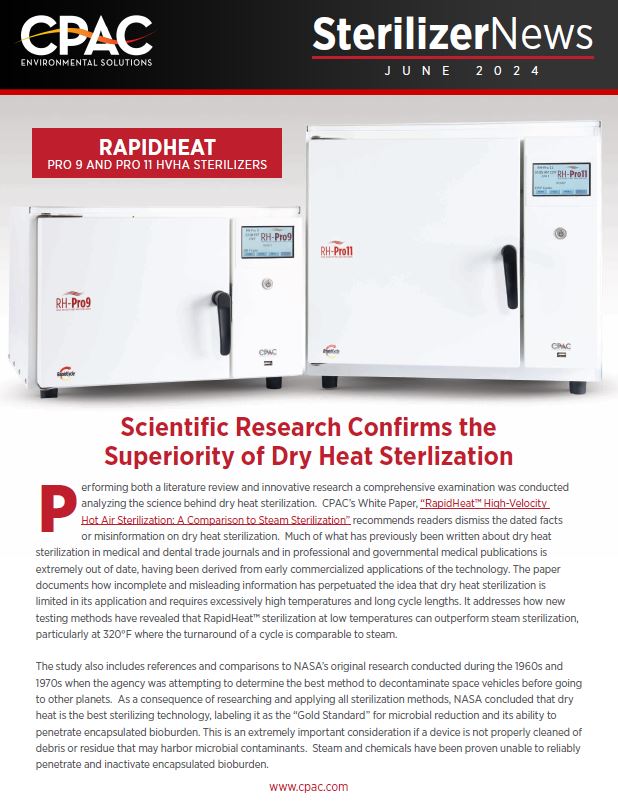RapidHeat HVHA – A Comparison to Steam Sterilization
This white paper summarizes Dr. Slavik’s extensive research confirming the equivalency/superiority of a RapidHeat low-temperature cycle to a standard steam sterilizer cycle. This study aimed to demonstrate that an HVHA temperature lower than HVHA’s standard temperature of 375°F could be equal to or superior to steam sterilization in cycle time to complete a 12-log kill while utilizing standard steam sterilization wrap and pouches to contain the instruments. The lower temperature also enables instruments previously identified as incompatible with HVHA’s higher standard temperature to be sterilized with no abnormal heat degradation.
CPAC’s High-Velocity Hot Air (HVHA) sterilization technology at 320°F is comparable to steam sterilization at 270°F
Recent advancements by CPAC Equipment, Inc. (“CPAC”) in the commercial design and engineering of tabletop versions of what the CDC describes as “forced-air” dry heat sterilization prompted CPAC and its Director of Research and Development, Dr. Nelson Slavik (author) to conduct research that would validate the effective application of “low-temperature” forced-air technology in the sterilization of medical instrumentation.
This paper presents scientific evidence and research demonstrating that CPAC’s High-Velocity Hot Air (HVHA) sterilization technology at 320°F is comparable to steam sterilization at 270°F in total processing times, sterilizer load capacities and instrument material compatibility. The ability of HVHA sterilizers to control and maintain set temperatures across a broad temperature range has led to the development of a novel approach for determining D-values under actual sterilization conditions. During microbial spore reduction efficacy studies, a mathematical equation was derived by plotting the acquired set of D-values against their respective temperatures, enabling a D-value to be obtained for any temperature ranging from 250°F through 320°F. Calculations can now determine the amount of spore inactivation that has occurred throughout the HVHA sterilization process. Results reveal that HVHA at 320°F achieves greater spore inactivation in lesser processing time when compared to the traditional time/temperature profiles of steam sterilization.





